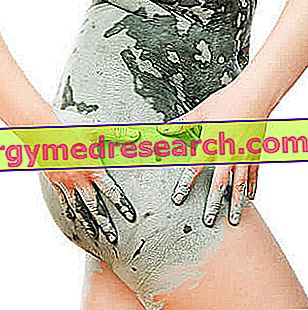The dog, like the human body, does not use all the energy contained in food; part of this is in fact lost through faeces, urine and the metabolic processes of digestion, absorption and transformation of nutrients.

In veterinary medicine, the energy value of a food is therefore more correctly expressed in metabolizable energy (EM), derived from the subtraction of the energy lost to the raw energy of the food.
Although the objective impossibility of feeding your dog with numbers, formulas and data on the nutritional needs of the animal can tell us if we are feeding it correctly.
Moreover, they can be useful when we want to make comparisons on the different types of feed, evaluating whether a brand is for example more energetic than others.
Energy requirements
| Nutritious | Digestibility coefficient man | Factor of Atwater | Coefficient digestibility petfood | Factor of Atwater edited |
| Carbohydrates | 96% | 4 kcal / g | 85% | 3.5 kcal / g |
| Protein | 91% | 4 kcal / g | 80% | 3.5 kcal / g |
| Lipids | 96% | 9 kcal / g | 90% | 8.5 kcal / g |
Daily energy needs of the dog depending on the physiological time (kcal EM / d)
| Post-weaning phase | Adult requirements x 2 |
| 40% of adult weight | Adult requirements x 1.6 |
| 80% of adult weight | Adult requirements x 1.2 |
| Bitches at the end of pregnancy | Maintenance requirements x 1.25-1.5 |
| Lactating bitches | Maintenance requirements x 3 |
Through the following formulas it is possible to make an approximate calculation of the daily energy needs of a dog (kcal EM / d) (daily metabolizable energy)
100 x (kg pv) 0.88 (tends to overestimate)
132 x (kg pv) 0.75 Note: pv stands for Peso Vivo (the actual weight of the dog in kg)
K x (kg pv) 0.67
- 99 inactive dog
- 132 active dog
- 160 very active dog
These formulas allow to calculate the so-called maintenance caloric requirement, which represents the amount of energy consumed by an adult dog, moderately active, in optimal climatic conditions.
It is therefore approximate data, given that the energy requirement of a dog can vary for example according to the type of breed, the state of health and the level of physical activity. P
to be able to refine the results and obtain a more likely energy requirement, various correction coefficients have been developed, as shown below.
If you want to calculate the daily energy needs of your dog with a certain precision, then you need to multiply the result of one of the generalized formulas just seen, by the coefficient (K) that is most suitable for the animal.
Coefficient of adaptation of energy needs in dogs (Blanchard, 2002)
| Breed factor (dog) | k1 |
| Nordic breeds (Labrador, Husky, Newfoundland, etc.) | 0.8 |
| Beagle, Cocker | 0.9 |
| Others | 1.0 |
| Greyhound, Great Dane | 1.1 |
| Behavioral factor | k2 |
| Lethargic | 0.7 |
| Very calm | 0.8 |
| Calm | 0.9 |
| Normal | 1.0 |
| Active | 1.1 |
| Very active | 1.2 |
| Dog physiological state | k3 |
| Pre-weaning | 3 |
| Post-weaning | from 2 to 1.2 |
| Adult | 1 |
| Second half gestation | from 1.1 to 1.5 |
| Lactation | from 3 to 4 |
| Castrated animal | 0.8 |
Online Calculator
| Dog health status | k4 |
| Physical inactivity | 0.7 - 0.9 |
| hypometabolism | 0.5 - 0.9 |
| Trauma | 1.0 - 2.0 |
| Initial tumor | 0.8 - 1.2 |
| Final tumor | 1.1 - 2.0 |
| Septicemia | 1.2 - 1.5 |
| Burns | 1.2 - 2.0 |
Macronutrient requirements
Protein requirements of dogs (AAFCO, 2000)
| % ss1 | % EM | ||
| Dog | |||
| Adult (maintenance) | 18 | 18 | |
| Growth and reproduction | 22 | 22 | |
1 diet with 3.5 kcal / g ss (dry substances)
Requirements for lipids and essential fatty acids in dogs (AAFCO, 2000)
| Lipids% ss1 | Linoleic acid% ss1 | ||
| Dog | |||
| Adult (maintenance) | 5.0 | 1.0 | |
| Growth and reproduction | 8.0 | 1.0 | |
1 diet with 3.5 kcal / g ss (dry substances)
NOTE: The ideal dietary fatty acid w-6: w-3 ratio is between 5: 1 and 10: 1 (see dedicated article on human nutrition)
Micronutrient requirements
MINIMUM VALUES OF NUTRITIONAL ELEMENTS RECOMMENDED BY NRC ( National Research Council ) FOR DOGS (PERCENTAGE AND QUANTITY PER kg OF DIET, DRY DIET) *
| NUTRITIONAL ELEMENT | UNIT' | QUANTITY' |
| Football | % | 00:59 |
| Phosphorus | % | 00:44 |
| Potassium | % | 00:44 |
| Sodium | % | 00:06 |
| Chlorine | % | 00:09 |
| Magnesium | % | 00:04 |
| Iron | mg | 32.0 |
| Copper | mg | 2.9 |
| Manganese | mg | 5.1 |
| Zinc | mg | 35.6 |
| Iodine | mg | 00:59 |
| Selenium | mg | 00:11 |
| Vitamin A | UI | 3710 |
| Vitamin D | UI | 404 |
| Vitamin E | UI | 22 |
| Thiamine | mg | 1.0 |
| Riboflavin | mg | 2.5 |
| Pantothenic acid | mg | 9.9 |
| Niacin | mg | 11.0 |
| pyridoxine | mg | 1.1 |
| Folic acid | mcg | 200 |
| Biotin | mcg | 100 |
| Vitamin B12 | mcg | 26 |
| Choline | mg | 1250 |
* DIET BASED QUANTITY WITH A AVERAGE ENERGY CONCENTRATION OF 3.67 Kcal EM / g ss (3.67 Kcal of energy metabolizable for each gram of dry substances ingested by the dog).



